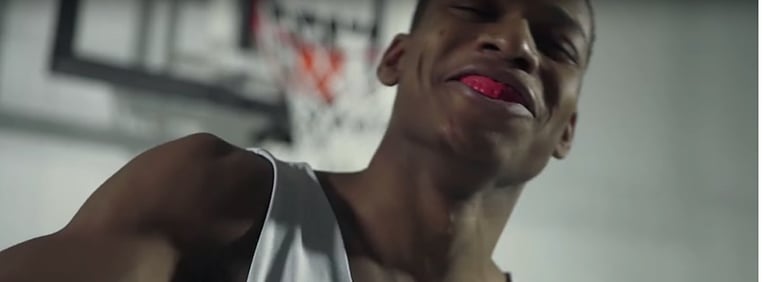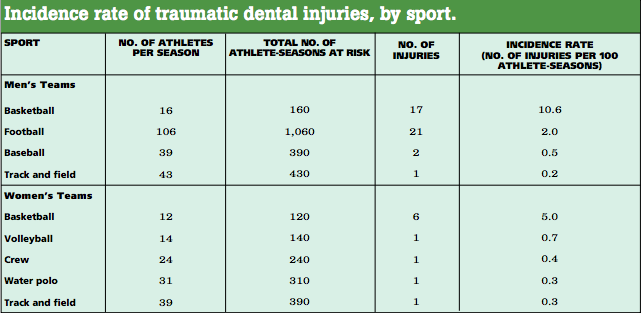
There comes a time when a sport has so many injuries, there is a call (sometimes a beg) for safety reform. In the early days of football, it was reported that 25-54% of football players suffered a dental injury. High Schools and colleges around the country started piloting mouth guard programs and pushed for an official mandate. Is it Basketball's turn?
Technically, basketball is not a contact sport. Yet, the reality of the situation is that basketball is the most dangerous sport with the highest rate of dental injury, because of complete lack of protection for basketball players on the court.
A 2007 study was published in the Journal of the American Dental Association found that basketball had the highest number of dental injuries among all sports. In fact, according to basketball injuries statistics, over 1 in 10 male players will suffer a dental injury this season.

Although the sport is not classified as a contact sport, there is contact that is responsible for these dental injuries. According to an article in the New York Times, league commissioner, David Stern, noticed a trend and warned players to protect themselves "in the event of ‘inadvertent’ elbows."
"Wearing a mouth guard gives you that sense of security, that you have this edge over someone else. You can take a hit but they don’t have that same protection," said college basketball player, Blair Orr, who recalled seeing two fellow athletics lose teeth during this season. Blair has been wearing a mouthguard during his entire basketball career, unlike most of his teammates.
Despite the risk of flying elbows, many players don't feel the need to wear a basketball mouthguard since it's not compulsory. Players don't want to wear an uncomfortable device that will hinder their ability to communicate and breathe during the game.
Therefore, convincing players to wear a mouthguard in basketball will be difficult.
We see a stronger push every year from social influencers to wear a guard - many all-star players in the NBA are starting to see the benefit of dental protection. LeBron James, Stephen Curry and Blake Griffin are making mouthguards more "cool" in the basketball culture, if for all the wrong reasons. For the small percentage of athletes who do choose to wear a mouthguard in basketball, they're known for chewing on it on the side of their mouth, effectively rendering it useless.
Chewing on your mouthguard does your teeth as much good as not wearing one at all. According to the ADA, a mouthguard should fit snug on your teeh, should not inhibit breathing and should stay in your mouth the entire game or practice.
In addition to social push, many basketball organizations are starting to mandate dental guards on the league and overall organizational level. High schools are starting to make mouthguards mandatory for their teams. With over $500 million spent each year on replacing teeth, it's a lot easier (and cheaper) to invest in prevention of dental injuries. With more awareness and coach/parent involvement, we hope that there is change for the better in mouthguard rules in basketball.
In 1960, the American Dental Association (ADA) started conducting research on the benefits of mouth guard use. Shortly after, the National Alliance for Football Rules Committee (NAFRC) and the National Collegiate Athletic Association officially mandated mouth guards in football. This took involvement from players, coaches, parents, media and social influencers to create a better, safer environment for the sport. We will continue to do our part and hope you do the same!
